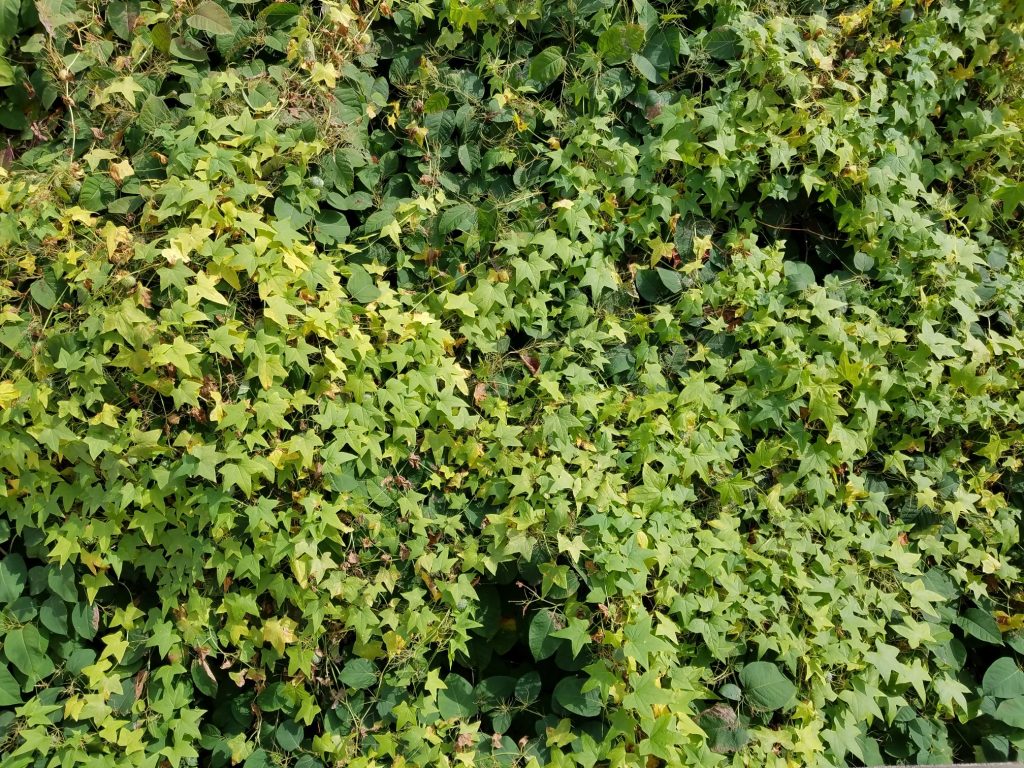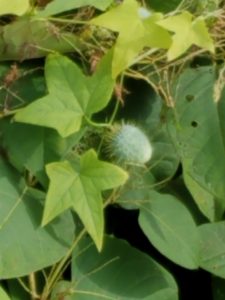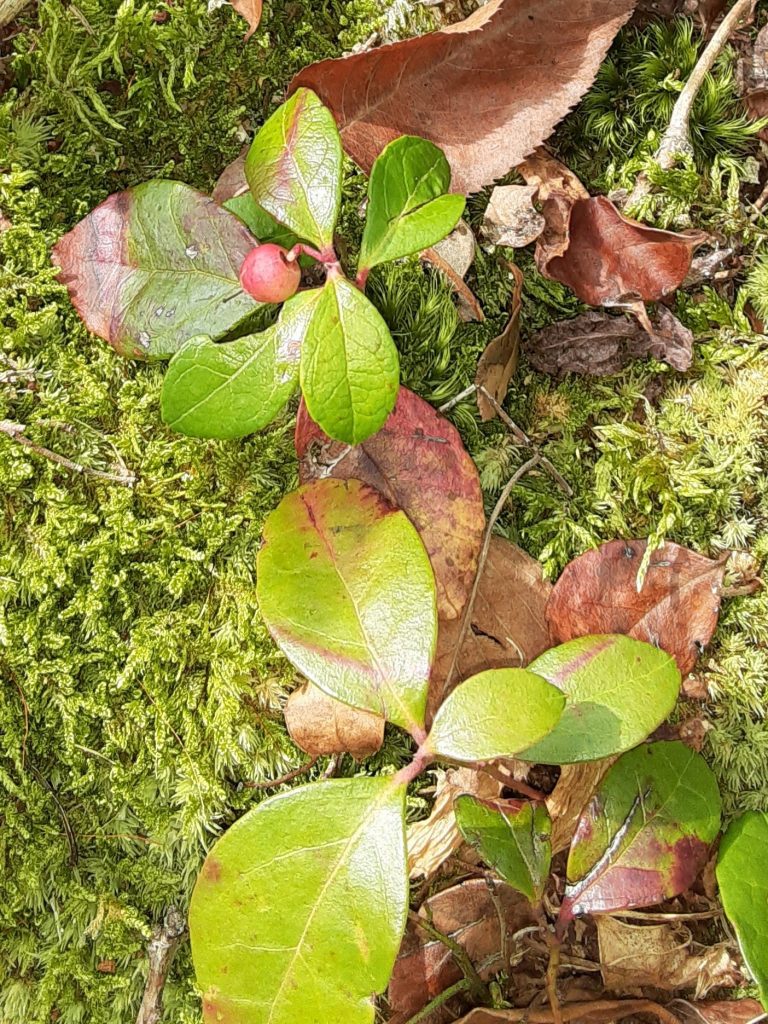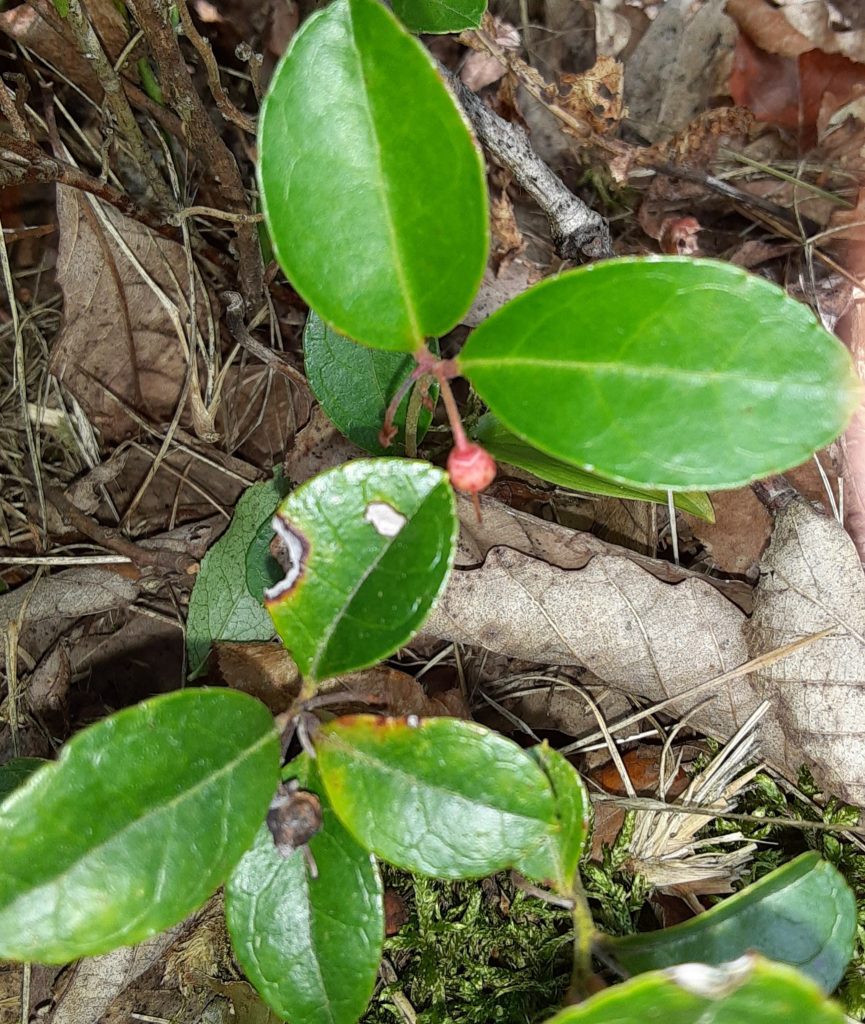By: Susan Sprout
Find out what’s underfoot with NPC member and environmental educator, Susan Sprout! Catch up on past issues of Underfoot: Introduction & Bloodroot, Trout Lily & Coltsfoot, Blue Cohosh & Dutchman’s Breeches, Ground Ivy & Forget-Me-Nots, Goldthread & Wild Ginger, Common Mullein & Sweet Woodruff, Aniseroot & Butterfly Weed, Myself , Jewelweed & Soapwort, American Pennyroyal & Great Lobelia, Boneset & Common Ragweed, Pokeweed & Blue Chicory.
Prickly Cucumber
There has been a fight going on right under my nose…well, right under the bridge walkway. Aggressive, non-native Japanese Knotweed plants have taken over the Muncy Creek streambank, pushing and shading out our local native plants. One plant is fighting back – Prickly Cucumber, a member of the same family as pumpkins and squash.

It has five-lobed leaves and tendrils that help it hold fast as it climbs all over that tall knotweed. It is a fight for light by this feisty native plant. It keeps growing upward and spreading out its leaves over its adversary. You can identify Prickly Cucumber at this time of year by finding its fruit, a one to two inch fleshy, egg-shaped capsule covered with bristles.

Native Americans used its bitter root for a tonic. That bitterness is caused by cucurbitacins, biochemical compounds produced as defense against herbivores. Its defense against bullying plants that want to take over? Just keep climbing!
Wintergreen
Have you had a teaberry milkshake lately? So good, yum! The commercial flavoring for one is synthetically produced methyl salicylate. Before that, it was obtained from birch trees. But before that, this amazing flavor was distilled from the leaves of our native Wintergreen plant.
Wintergreen because it stays green in the winter like its other evergreen Heath family members like Mountain laurel, Huckleberries, and Cranberries. The plant spreads by runners forming small colonies of plants in poorer dry to wet soils in woods and clearings all the way from Canada to Georgia and west to Minnesota. Its nodding white flower grows at the leaf base in mid to late summer. Fertilized by this time of year, the flowers have grown into round, pinkish fruits that turn a bright scarlet among its dark green oval leaves when fully ripe. The fruits or capsules often remain on the plant until the next flowering season, if not eaten by wildlife like birds or deer (or me).

Wintergreen with last year’s fruit. 
Wintergreen with new fruit growth.
Historically, wintergreen was used to flavor teas, candies, medicines and chewing gum. Applied to the skin, it has also relieved aching muscles and rheumatism, all the while making a person smell like a yummy teaberry milkshake tastes!

